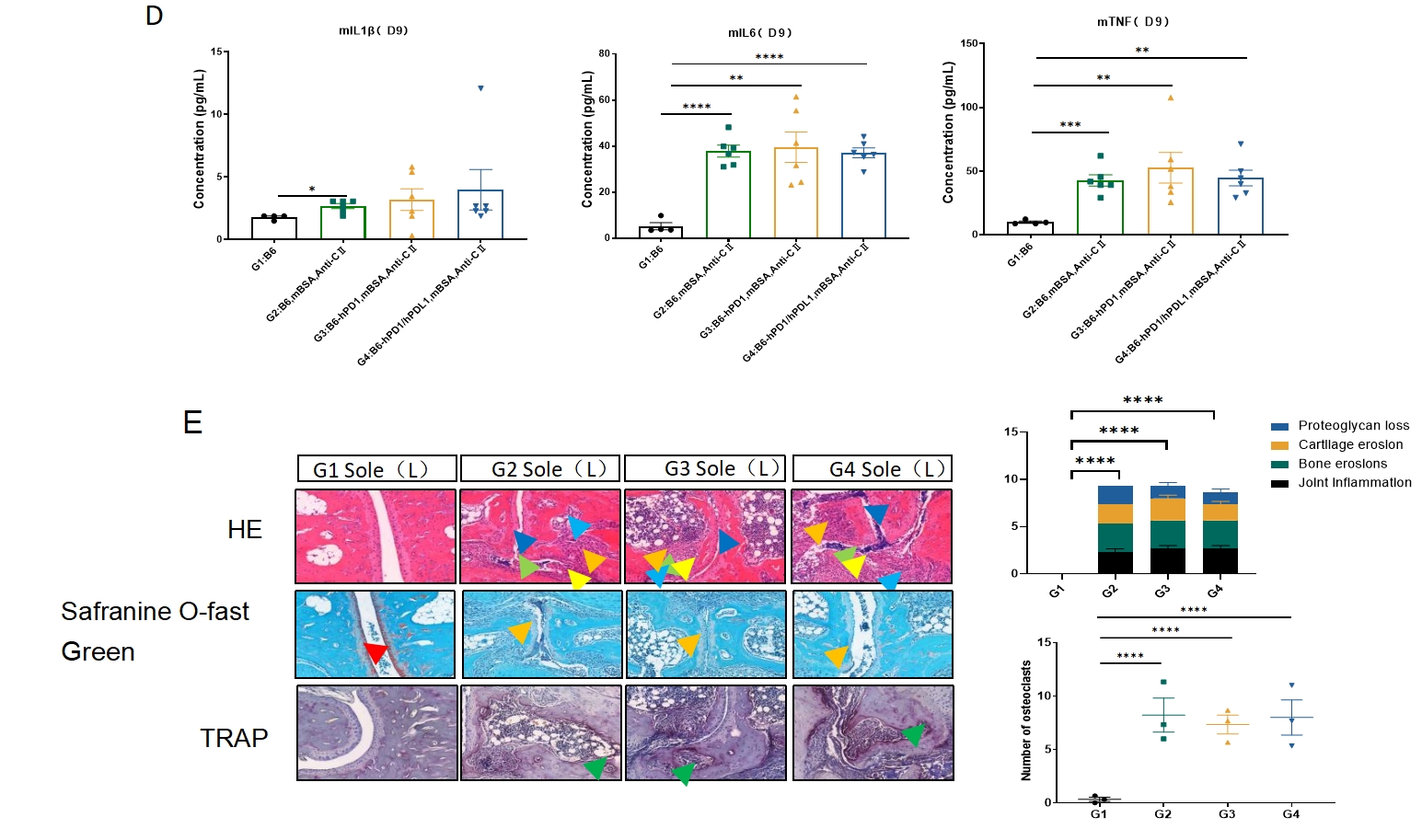The development of DTHA using mBSA occurs in two phases, the immunization and challenging phase. In the immunization phase, mBSA is injected subcutaneously to generate mBSA-specific T cells. In the challenge phase, recall responses of the mBSA-specific T cells are induced by injection of mBSA in one of the footpads, contributing to the release of pro-inflammatory cytokines which trigger the recruitment of other inflammatory cells such as neutrophils and macrophages at the site of inflammation. In the DTHA mouse model, inflammation generally reaches a maximum at 24–48 h after the second mBSA injection, and induction of inflammation and paw swelling relies on CD4+ T cell activity, as antibody-depletion of CD4+ T cells prevents DTHA development.


Fig.1 Delayed-Type Hypersensitivity Arthritis Model
The method for induction of Delayed-Type Hypersensitivity Arthritis Model is shown in Fig.1A. After immunization, the redness and swelling area of the paws of the mice in the model group increased, as shown in Fig.1B. The change of immune cells population in synovial fluid were shown in Fig.1C. The inflammation cytokines TNFa and IL-6 in the model group mice were also increased as shown in Fig.1D. The results of HE pathological staining, TRAP pathological staining and Safranine O-Fast Green of the mice indicated that the bone tissue of the mice in the model group showed severe bone erosion and collagen degradation.(Fig.1E). Data were presented by mean ± SEM. *P<0.05,**P<0.01, *** P<0.001.

